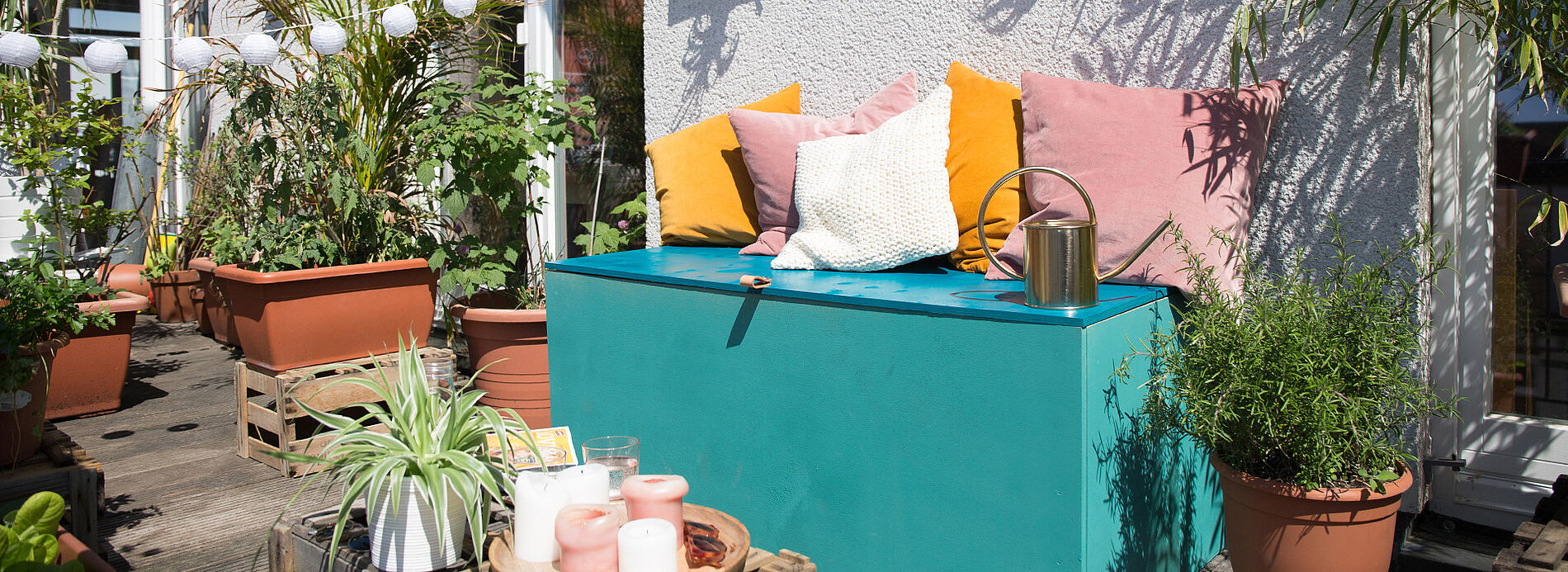Balcony bench with lots of storage space
Summer is finally here, so you want to spend all your free time outdoors, right? When it comes to extending the living room, a balcony is the ideal solution. Whether as a place of retreat for quiet moments, as a place to hold a party or as a green paradise, in just a few steps you can turn your balcony into a little oasis of luxury.
Rented apartments often only have a small balcony, making it difficult for many people to express their creativity. Multifunctional furniture is therefore ideal when space is tight. Our storage bench provides comfortable seating for two people but also has plenty of space for charcoal for the barbecue, potting soil and cushions. In these DIY building instructions, we show you how you can redesign your balcony to create a lounge area for lazy summer evenings. You don't need a lot of DIY experience to accomplish this project. Step by step, we'll assemble a box that you can relax on. The other great thing is that you'll be creating it with our sprayer and gorgeous colours to create a truly unique piece of furniture.







